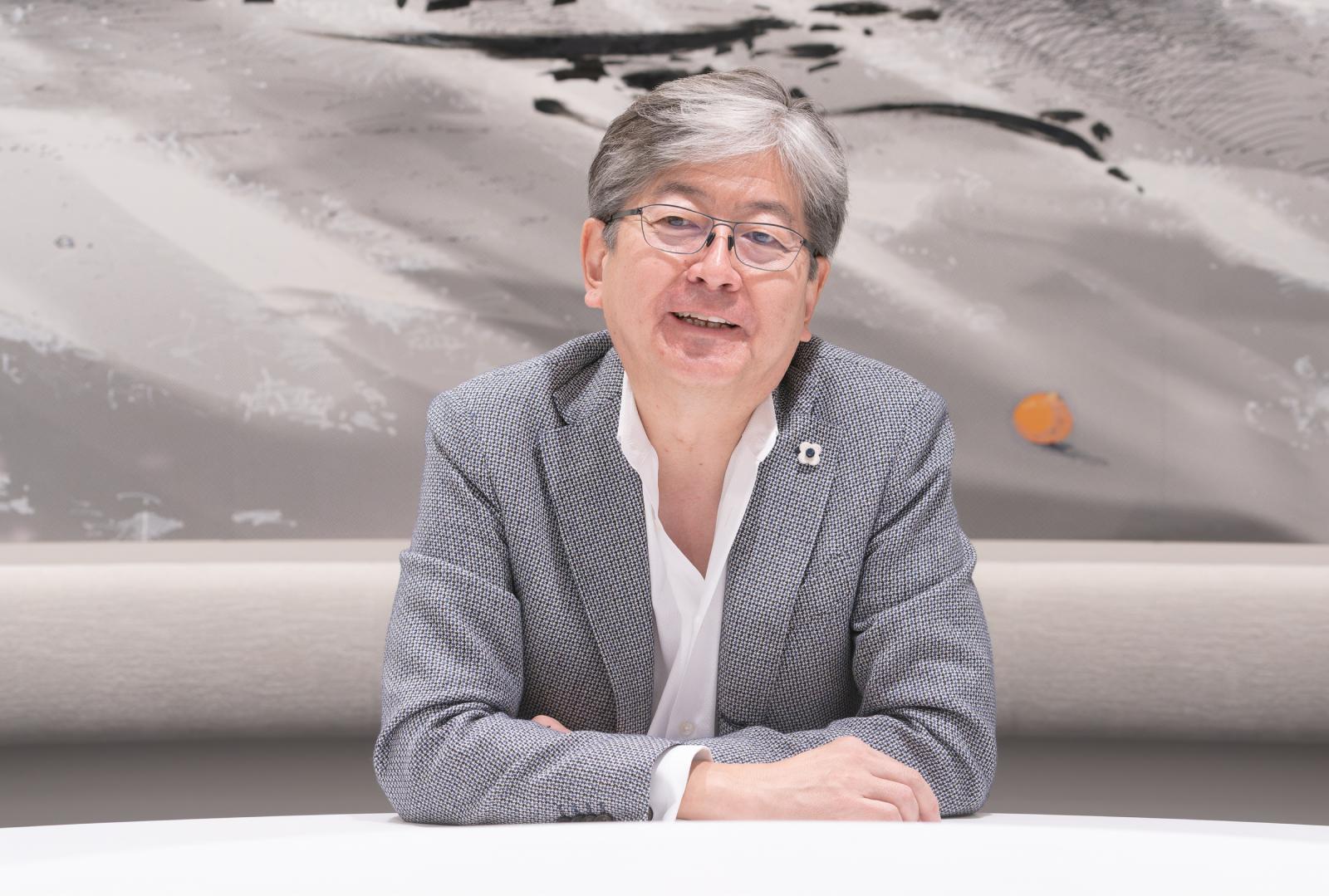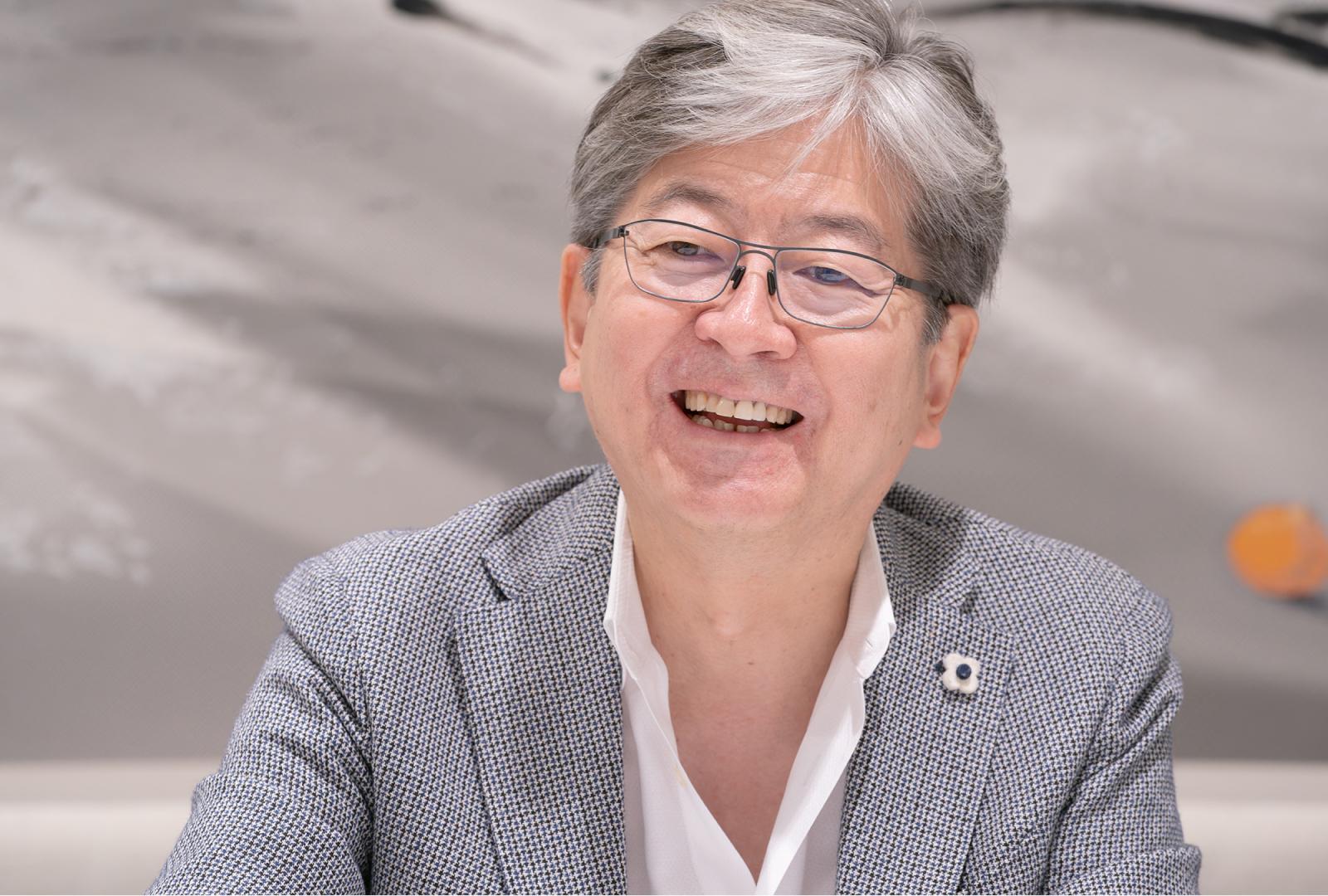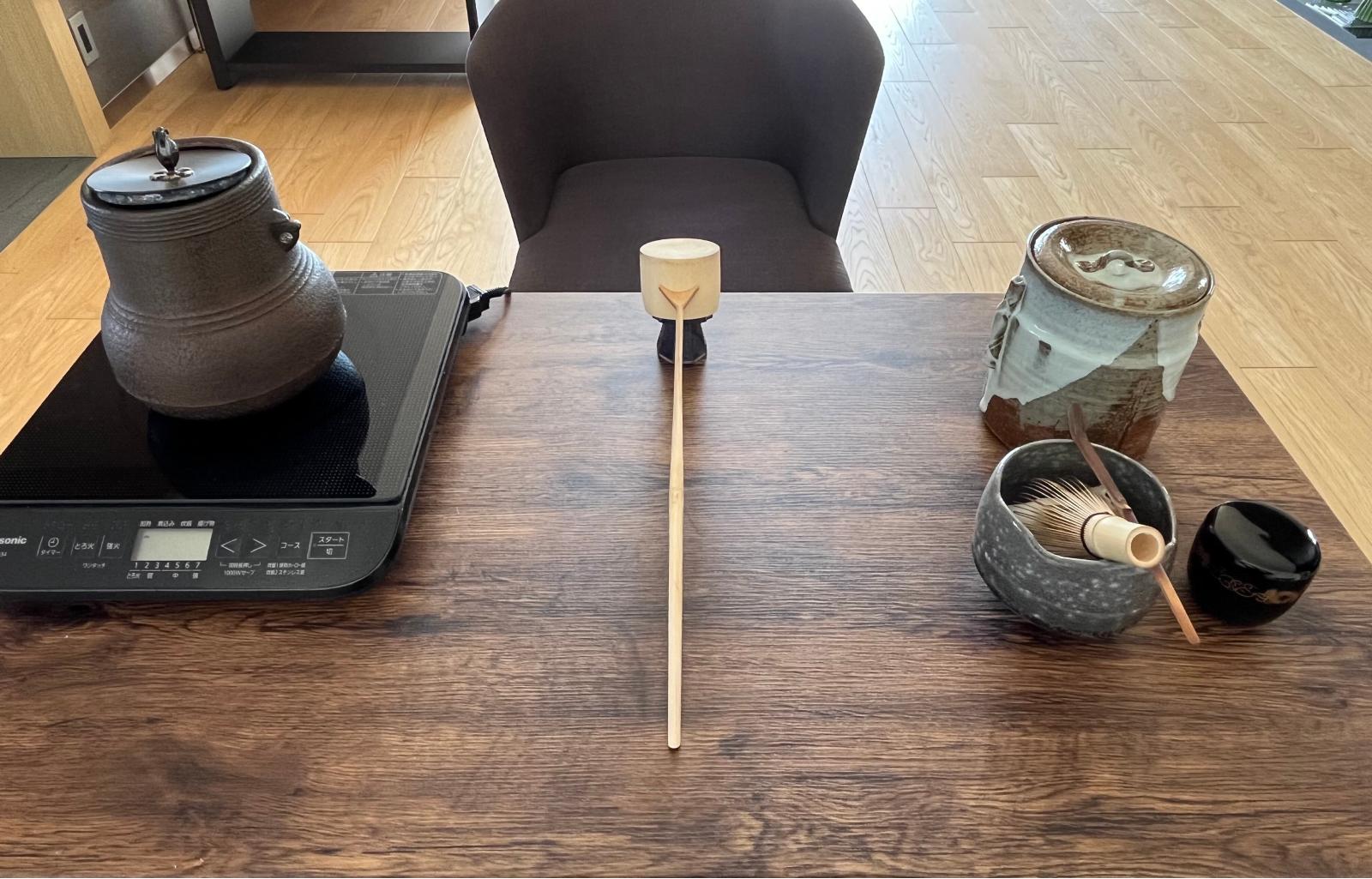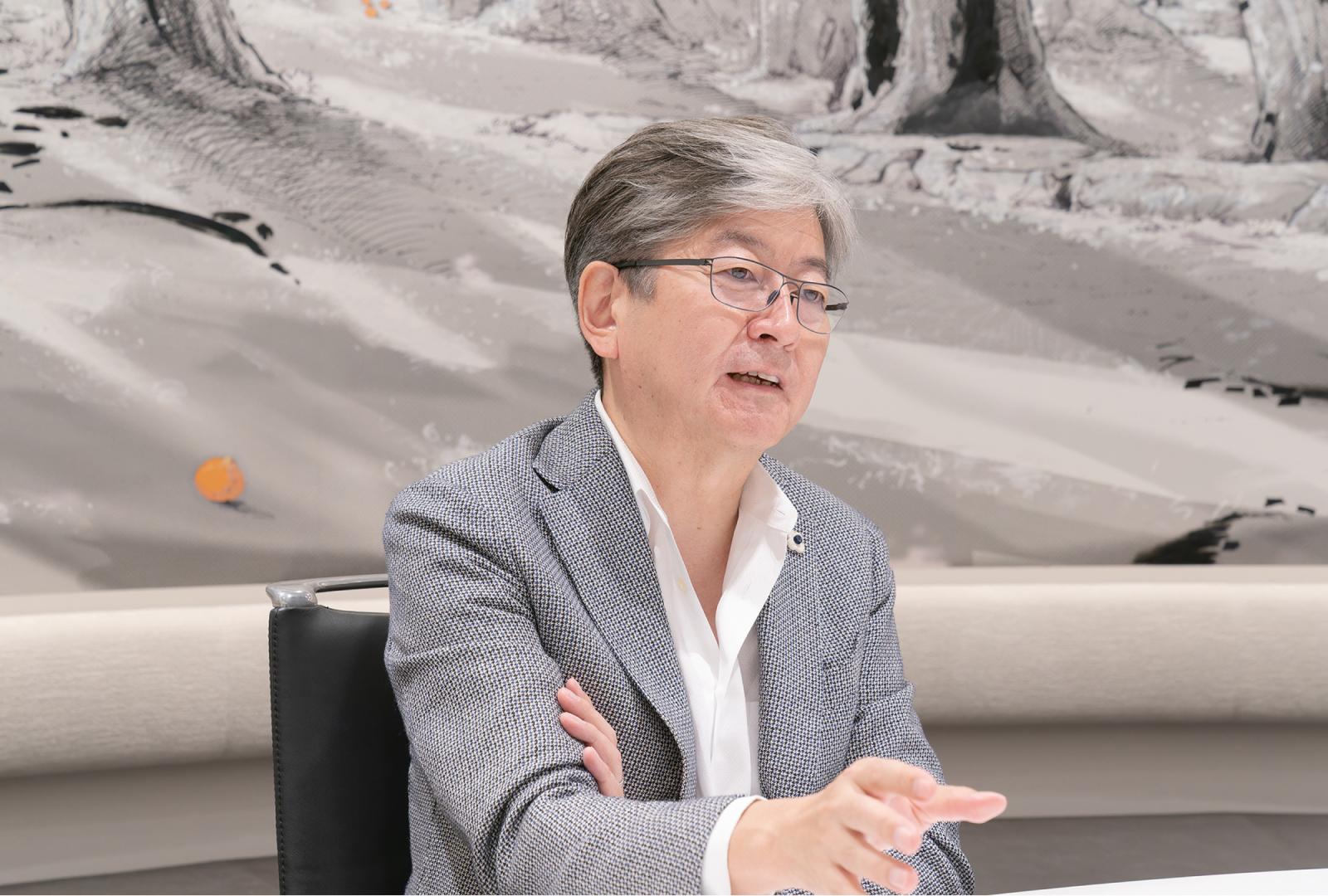- TOP
- Stories
- Interview with Oki Matsumoto, Chairman of the Board, Monex Group:Enjoying Japanese Culture through the Framework of the Tea Ceremony (6)
- Business Solution
Interview with Oki Matsumoto, Chairman of the Board, Monex Group:Enjoying Japanese Culture through the Framework of the Tea Ceremony (6)

By: Yoh Otsuka (Senior Fellow & Senior Consultant, Intelligence Group, Nikkei Business Publications)
An increasing number of business executives are taking part in tea ceremony classes. What is it about the tea ceremony that attracts these busy people?
"I've just started 'Sado.' Sa means tea, not Sauna!" posted Oki Matsumoto, Chairman of the Board, Monex Group, on his blog in August 2023. In fact, he had begun practicing sado tea ceremony back in January 2022, and his first exposure to it had been six years before then, in 2016.
In 2016, the president of the publishing company that had published Matsumoto's book invited him to observe a session of the Enshu tea ceremony school. The Enshu School was founded by the tea master Kobori Enshu, in the early Edo period. However, after just a couple of lessons, Matsumoto quit.
Several years later, at the end of 2021, he was invited by the president of a startup company who practiced Enshu-style tea ceremony to attend a session. "I hadn't had any lessons for a long time, so I was a bit hesitant, but after that session, I decided to give it another try," said Matsumoto. He resumed practicing in January of the following year, and now attends classes in Tokyo's Shinjuku area about two or three times a month.
Matsumoto is enrolled in a program in which he receives instruction directly from the head of the school. When asked if it isn't difficult for him to fit in lessons two or three times a month, he replied, "I travel to and from my lessons in a company car, and I can work in the car on the way there and back. My lessons last for an hour at the most, so I don't feel I am losing any time," Matsumoto said.
"During the tea ceremony, I can concentrate without any distractions," he says. "When I go jogging, or swimming, or listen to music, I tend to think about work, but not when I am practicing tea ceremony." After practicing, he either drinks the tea alone or, if time permits, he may enjoy tea prepared by someone else as their guest.
The tea ceremony that Matsumoto is currently practicing involves usucha (weak)tea and uses tables. "I can't kneel on the floor for long because I injured my knee in high school. But, if possible, I'd like to practice the ceremony on tatami mats. I'm actually thinking of getting treatment for my knee so I can do that!"

At the office of Monex Group (Photo by Junya Inagaki)
Serving tea to guests at home
Matsumoto's home is equipped with a kettle, tea bowls, tea whisks, and other basic tea utensils. He makes and drinks matcha tea almost every day, and when his friends gather at his home, he sometimes makes and serves tea for them.
"I buy tea utensils cheaply at vintage stores, or just use other utensils instead," says Matsumoto. He uses a height-adjustable table on casters, which he purchased on Amazon. It can be adapted to fit the height of sofas, chairs, or wherever the guests are sitting. "I use an induction stove to heat the kettle," he says. "It's efficient because it conducts heat well and the water boils quickly." He has a refreshing attitude to the tea ceremony, making use of things at hand, rather than being fixated on pricey items. "The other day, a friend of my wife's came by with a gift, so I invited her into the living room and made her tea. It doesn't have to take a long time. Fifteen minutes is enough to sit, relax and chat. I think that's really valuable time," says Matsumoto.
When asked whether his knowledge of the tea ceremony is useful in business, Matsumoto said he is often asked the same question about art.
Matsumoto has been active in supporting arts and culture for about 15 years. He displays contemporary art works at the Monex Group's offices and invites artists in to hold workshops. "In reality, art and business have very little to do with each other," he says. "However, artists tend to be pretty unusual types, not the kind of people you would come across in business. By talking and working with them, I think you can develop mutual understanding and an appreciation of diversity. The same is true of the tea ceremony. It's not that it leads directly to business, but it seems to work on you slowly."
Matsumoto talked about how practicing the tea ceremony has influenced him: "As a businessperson, I thought I had pretty good social skills. However, in the tea ceremony, everything—how you greet people, how to behave—is punctuated with appropriate pauses. While there are no fixed phrases for greetings or giving thanks, it is important to perform each action slowly and to look the other person in the eye. I realized that I had not been able to do that until now."
The position of tea utensils during the tea ceremony is very strictly regulated. Matsumoto says: "Space is organized well in the tea ceremony. The tools are arranged with perfect spacing and it is very rational. It's the same in the office—if your tools are arranged in a rational way, it looks better and they are easier to use."

Tea utensils in Matsumoto's home, with a kettle on an induction stove to boil water
The fun of devising a tea ceremony as a program
It has been nearly two years since Matsumoto started practicing tea ceremony again. "When I took it up again, at first it was all I could do just to prepare the tea, but as I got used to it, I started to have more time to think and my interests broadened," he said. I want to know how the utensils are made and why they are used in the way they are. In the near future, he and his "tea friends" will try out making a tea ladle in Kyoto.
The tea ceremony is a kind of "program," Matsumoto says. "Within a carefully defined setting of place and time, the master offers a brief insight on Japanese culture and art, and the guests enjoy themselves. I think it is interesting to think about what can be added to these programs and who could get involved."
Matsumoto has always been interested in shrines, temples, and the ancient history of Japan, and he says many aspects of these are actually connected to the tea ceremony. "Within the framework of the tea ceremony," he says, "you begin to understand traditional Japanese culture."
The combination of utensils and the manner in which they are used in the tea ceremony is governed by fixed rules.
"The combinations are finite, so you can memorize them if you want to. However, if you view the tea ceremony as a 'program,' you have an infinite number of options for when, with whom, and where to enjoy tea. In that sense, there is no end to the tea ceremony. That is why I feel that I want to continue it forever," says Matsumoto.
According to Matsumoto Japan has the most "high-context culture" in the world, by which he means it relies heavily on tacit understanding. "Japanese culture cannot be expressed by words alone. It is made up of many elements that can be experienced through history and the five senses, and that is what I think is special about Japan. The tea ceremony is like the backbone supporting this 'high-context' culture. By practicing tea ceremony even for a short time, you can gain a means to express and feel the culture. That is why I think that practicing even one hour at a time is so important."

Artists' works are displayed in the office room (Photo by Junya Inagaki)
Oki Matsumoto, Chairman of the Board, Monex Group, Inc.
Matsumoto graduated from Kaisei Private High School after which he entered and graduated from the University of Tokyo, Faculty of Law in 1987. He joined Solomon Brothers Asia Securities (now Citigroup Inc.), moved to Goldman Sachs in 1990 and became a partner in 1994. He established Monex, Inc. in 1999 as a joint venture with Sony, which was listed on the Tokyo Stock Exchange Mothers Market in 2000 (currently listed on the Prime Market). He is also an outside director of MasterCard USA and Vice Chairman of the Human Rights Watch.
For further details, please contact:
Nikkei Business Publications, Inc.
NIKKEI BP

"Foresee the future, Unlock the insight" is the expression that describes our mission. As Japan's leading BtoB media service, we meet diverse business community needs in the three key categories of "management," "technology" and "lifestyle."
See More
